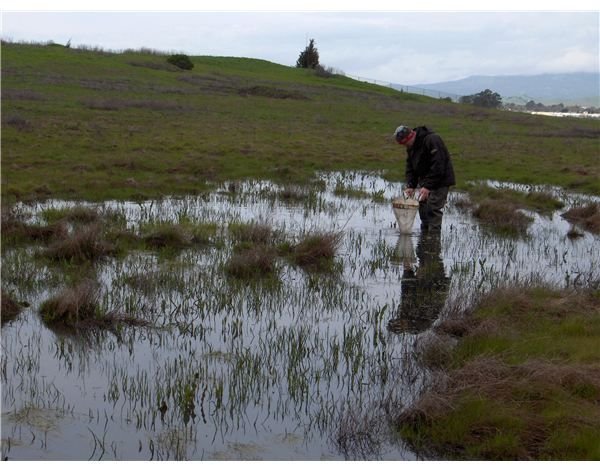Understanding Career Facts About a Wildlife Biologist
Career Overview
Wildlife biologists work in conservation and management of biological resources. These duties include the study of wild animals and their habitats. They study the life processes of animals including origins, diseases, genetics and behavior. This work takes much research both in the field and in laboratories and requires an extensive amount of investigative thinking and much hands-on experimentation. Wildlife biologist must possess the ability to work independently or as part of a team.
Education
An educational background in chemistry, biology, zoology, mathematics and botany is necessary to become a wildlife biologist. Other courses of study involved in a wildlife biologist degree include wildlife management, mammalogy, animal ecology and ornithology. Wildlife biologists who wish to pursue research careers should concentrate their studies in wildlife biology, botany and zoology. A Ph.D is often a prerequisite of research positions, teaching or for advancement to management positions. A bachelor’s or master’s degree in biological science can be sufficient for entry-level research positions.
Employment
Other career facts about a wildlife biologist include who will hire a wildlife biologist. Many wildlife biologists find jobs in colleges or universities as teachers or in research. Federal, state and local governments also hire biological scientists and make up about 40 percent of all wildlife biologist positions. Biological scientists working for the federal government work for U.S. Departments of Defense, Interior and Agriculture. Industries that hire biological scientists include scientific laboratories and technical consulting services. Opportunities exist for advancement in this occupation. Wildlife biologists can move into management positions where they become responsible for directing activities at botanical gardens or zoos. The U.S. Department of the Interior hires wildlife biologists who work in many locations throughout the United States and its territories. They offer both research and non-research positions.
Salary and Job Outlook
According to the U.S. Bureau of Labor Statistics, there were approximately 91,300 wildlife biologist jobs in 2008. Employment for biological scientists is expected to increase faster than average for all occupations due to the increase in biotechnological research. This occupation has an expected growth rate of 21 percent over the next decade. Marine biology is a very specialized field and the employment opportunities there will be limited. The effort to clean up the environment will also call for an increase in the number of wildlife biologists. Keen competition will exist for research positions. The annual median wage in 2008 for a wildlife biologist was $56,500. Wildlife biologist positions are less affected by the recession. Research projects are often long-term and the biologists have a better chance of keeping their jobs. However, government budget cuts sometimes cause these projects to lose funding. For more information regarding career facts about a wildlife biologist and other biology jobs, read Education and Training for a Marine Biologist and Understanding the Role of an Environmental Biologist.
References and Image Credit
https://jobs.virginia.gov/careerguides/wildlifebio.htm
Virginia Jobs: Career Guide for Wildlife Biologist
https://www.bls.gov/oes/current/oes191023.htm#ind
Bureau of Labor Statistics: Zoologists and Wildlife Biologists
https://www.bls.gov/oco/ocos047.htm
Bureau of Labor Statistics: Biological Scientists
https://www.usgs.gov/ohr/student/learn/jobs/job-wldlf.html
U.S. Department of the Interior: Wildlife Biologists
Image Credit: Navy.mil
